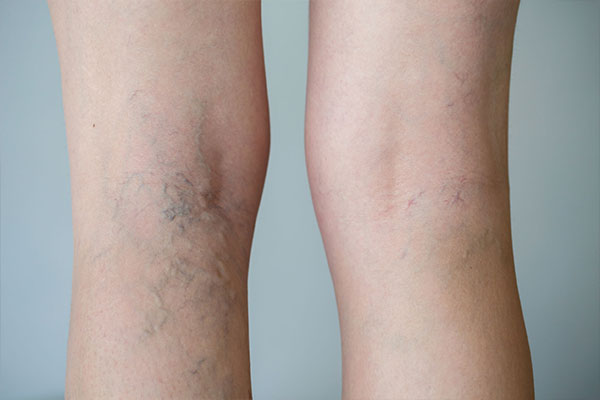
Are varicose veins and spider veins the same? Can I prevent spider veins? Here are some essential facts you should know.
1. Varicose veins and spider veins are related, but they are not the same.
The terms “varicose veins” and “spider veins” are often used interchangeably, but they do not describe the same condition. Varicose veins are large, knotted, raised vessels that occur in the legs. Spider veins, or telangiectasias, are broken blood vessels that are closer to the surface of the skin. Often seen in the legs, spider veins can also appear on the face. Varicose veins may contribute to the formation of spider veins, but spider veins can be present in the absence of varicose veins.
2. Varicose veins arise due to weakened valves.
The vascular system is a complex network of blood vessels that is responsible for the flow of blood. Leg veins pump blood back to the heart, using valves to control backward flow. If these valves are damaged or not functioning optimally, blood collects and the vein bulges.
3. There is no single factor that causes spider veins.
Age, genetics, and hormonal fluctuations are linked to the appearance of spider veins. Unfortunately, there is no sure-fire way to prevent them from appearing. However, it may be helpful to minimize stress on the vascular system. Standing for long periods of time, for example, may contribute to circulatory problems, increasing the risk of spider veins.
4. Spider veins can occur in younger people.
Fact: It is common for people–women, in particular–to have spider veins in their 20s, even earlier. Although age may contribute to spider vein formation, it is not the only factor. Genetics, weight and hormones–even prolonged, high intensity workouts–may play a role in the appearance of leg veins.
5. Leg veins are more common in women, but men can have them as well.
Vascular problems are often associated with pregnancy, making them more prevalent among women. But according to the U.S. Department of Health and Human Services, an estimated 40 to 45 percent of men in the United States experience some form of vein problem. Varicose veins are most common in people 50 years and older.
6. Abnormal veins are more frequently seen in the legs because of pressure.
It takes a lot of work to send blood back to the heart–and leg veins have an extra challenge: gravity. Factor in the pressure of body weight and your leg veins face an uphill battle. This pressure can overpower the one-way valves that control the flow of blood, creating venous reflux, or the pooling of blood.
7. Treatments for leg veins are considered safe and effective.
Leg veins are unsightly, but generally do not pose health risks. Fortunately, there are cosmetic treatments that can reduce their visibility. Laser treatment and sclerotherapy are two non-surgical procedures that can help zap away those purple and red webs. Both are effective, but the preferred treatment will depend on the size of the damaged vein.
Leg Vein Treatments at Advanced Dermatology
At Advanced Dermatology, our doctors specialize in the treatment of leg veins. Contact one of our conveniently located offices in New York or New Jersey to schedule a consultation.
